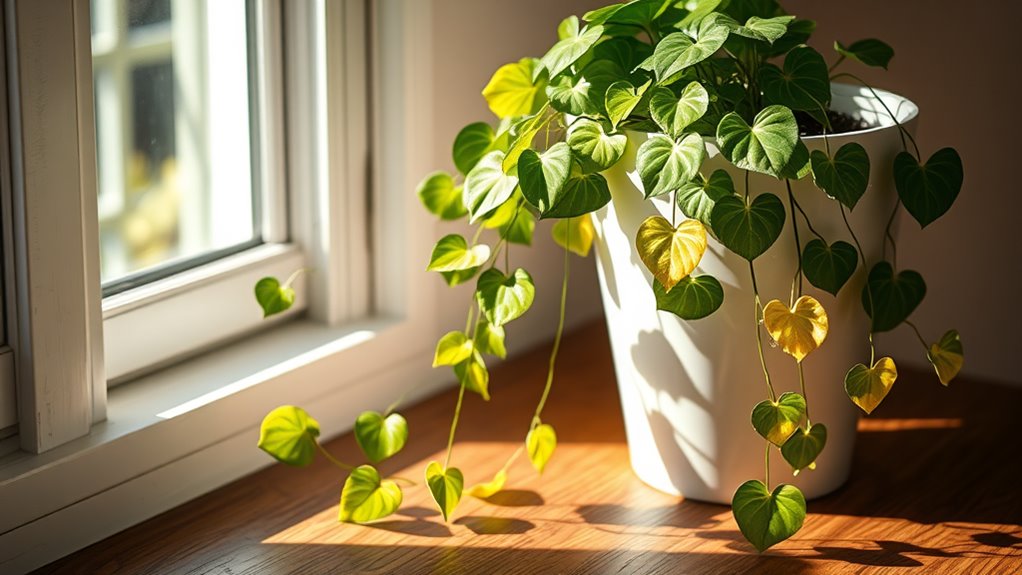My Favorite Indoor Plant That Practically Grows Itself
If you’re seeking an indoor plant that thrives with minimal effort, consider the Snake Plant. Its resilient nature allows it to adapt to various conditions while effectively improving indoor air quality. Research shows its unique ability to photosynthesize at night enhances indoor environments. Understanding the specific light and watering preferences will ensure your plant flourishes effortlessly. Let’s explore what makes this particular species a standout choice for anyone with a busy lifestyle or a tendency to forget about plant care.
The Perfect Low-Maintenance Indoor Plant
If you’re looking for an indoor plant that thrives on neglect yet brings a touch of nature into your space, consider the snake plant (Sansevieria trifasciata).
This hardy species requires minimal indoor plant care, tolerating low light and irregular watering.
Its unique ability to convert CO2 into oxygen at night enhances indoor air quality, making it a scientifically-backed choice for your home. Additionally, snake plants are one of the most resilient indoor plants that can survive in various conditions, perfect for forgetful plant owners.
Reasons This Plant Thrives on Neglect
While many plants struggle without regular attention, the snake plant thrives due to its remarkable adaptations that allow it to conserve water and endure less-than-ideal conditions.
Its thick, fleshy leaves store moisture, making it resilient during drought.
Additionally, it utilizes Crassulacean Acid Metabolism (CAM) to minimize transpiration, allowing it to photosynthesize efficiently at night, further enhancing its ability to survive neglect. This plant is also known for its easy care requirements, making it an ideal choice for busy individuals.
Ideal Conditions for Growth
What factors contribute to the ideal growth conditions for a snake plant? To ensure optimal health, consider light, temperature, and soil composition. Here’s a concise overview:
| Factor | Ideal Condition |
|---|---|
| Light | Indirect sunlight |
| Temperature | 60°F to 75°F (16°C to 24°C) |
| Soil | Well-draining, sandy |
| Humidity | Low to moderate |
Maintaining these conditions fosters strong, resilient growth. Additionally, incorporating common pest management strategies can further enhance the overall health of your snake plant.
Watering and Feeding Guidelines
Proper watering and feeding are crucial for the health of your snake plant.
Water it every two to six weeks, allowing the soil to dry completely between sessions; overwatering can lead to root rot.
Use a balanced, diluted liquid fertilizer during the growing season.
High nitrogen content promotes healthy leaf growth, while excess nutrients can harm the plant’s well-being. Additionally, it’s important to assess soil moisture before watering to prevent overwatering.
Common Pests and How to Address Them
Although snake plants are relatively resilient, they can still fall victim to common pests like spider mites, mealybugs, and scale insects.
To effectively combat these issues, inspect your plant regularly, looking for signs of infestation. Use insecticidal soap or neem oil for treatment, applying it directly to affected areas. Maintaining adequate humidity levels also helps deter these pests from invading your indoor oasis. Additionally, employing natural pest control methods in your gardening practices can create a healthier environment for your snake plants.
Styling and Display Ideas for Your Plant
After ensuring your snake plant is free from pests, you can enhance its visual appeal in your home with thoughtful styling and display ideas. Consider varying pot heights or grouping multiple plants to create an organic flow. Here’s a quick comparison of display options:
| Display Type | Benefits |
|---|---|
| Shelves | Saves floor space |
| Stands | Adds height variation |
| Hanging Baskets | Draws attention upward |
| Window Sills | Maximizes natural light |

